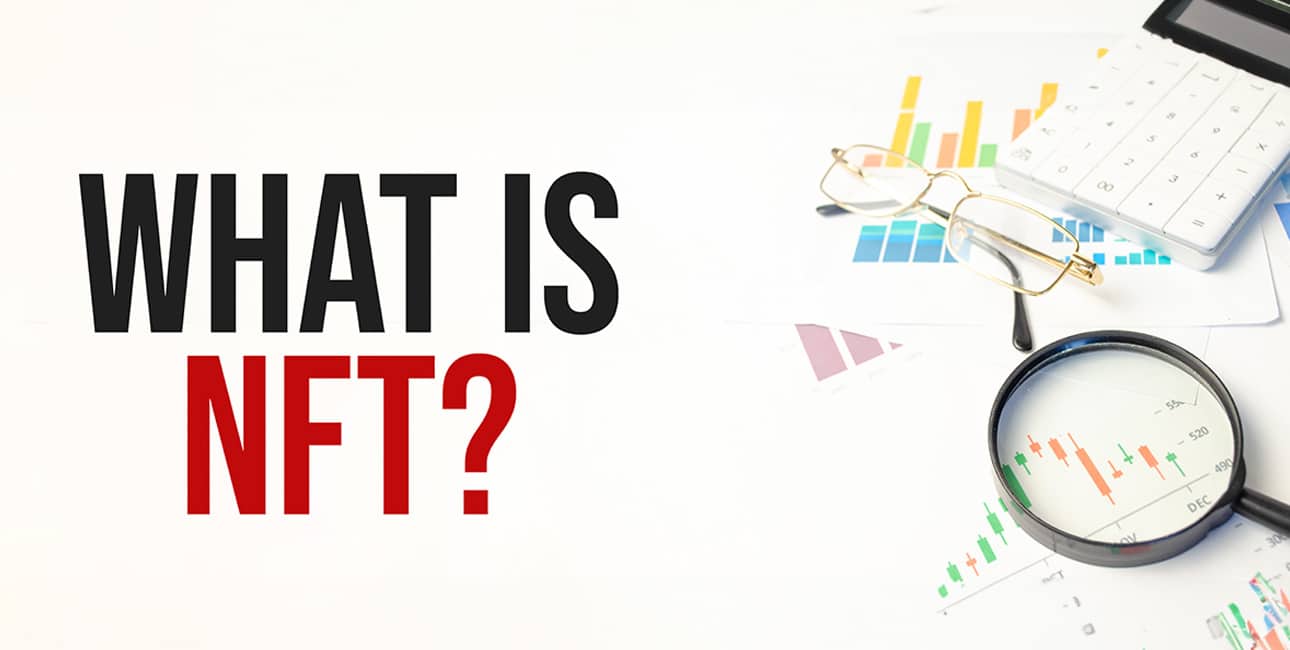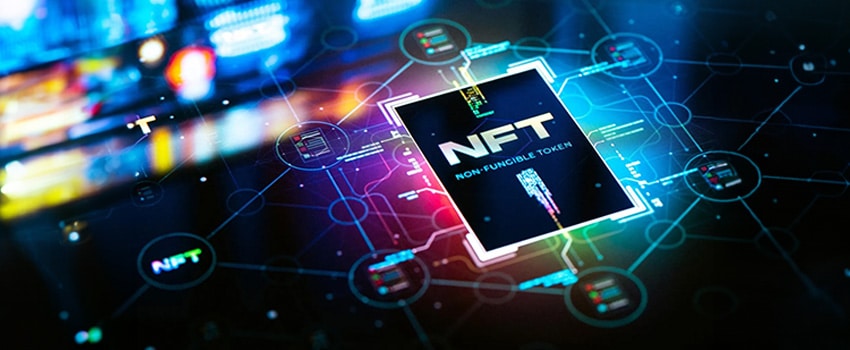
NFT trading exploded from $82 million in 2020 to a staggering $17 billion in 2021 – a 21,000% surge that grabbed global attention. NFTs are unique digital tokens that prove ownership of specific items, ranging from digital artwork to virtual real estate, all secured on blockchain technology.
The NFT market has changed dramatically since its peak. When artist Beeple sold his NFT collection for over $69 million in early 2021, many saw it as the start of a digital gold rush. Fast forward to reality – by September 2023, over 95% of NFT collections held zero monetary value. This sharp contrast shows why understanding NFTs matters before jumping in. The first-ever NFT, “Quantum,” created in 2014, sold for just $4 during a presentation – quite modest compared to the later market frenzy.
Let’s understand the digital asset landscape by breaking down complex concepts into actionable knowledge. In this guide, we’ll explain what NFT stands for, decode the NFT meaning in simple terms, and walk you through everything you need to know about these digital assets. Whether you’re exploring the technology or thinking about creating your own NFTs, our straightforward explanation will clear up the confusion surrounding non-fungible tokens.
Let’s make sense of NFTs together!
What Does NFT Stand For and What Does It Mean?
The acronym NFT stands for Non-Fungible Token. This technical term becomes straightforward when we break it down properly.
NFT Meaning in Simple Terms
Non-fungible tokens are unique digital identifiers recorded on a blockchain that certify ownership and authenticity of a specific item. They represent ownership of one-of-a-kind assets that cannot be copied, substituted, or subdivided.
An NFT works as a digital certificate verifying ownership of something special—whether that’s digital art, music, videos, or even representations of real-world items like real estate. The true value of NFTs comes from their ability to solve the issue of proving uniqueness in the digital world.
Think of an NFT as an irrevocable digital certificate of ownership [4]. When you purchase an NFT, the ownership transfers to your account, with your private key serving as proof of ownership. The creator’s public key acts as a certificate of authenticity for that asset.
Fungible vs Non-Fungible: What's the Difference?
The concept of “fungibility” stands at the core of understanding NFTs. In economics, something is fungible when it’s mutually interchangeable with identical items.
- Fungible assets: Items like dollar bills, Bitcoin, or commodity grains where each unit has identical value and can be exchanged equally. If I lend you a $10 bill, you can pay me back with any $10 bill—they're completely interchangeable.
- Non-fungible assets: Unique items with individual values that aren't interchangeable—like original artwork, collectibles, or real estate. Each has specific properties that make it one-of-a-kind.
The core difference? Fungible tokens express value (like cryptocurrency), while non-fungible tokens store unique data. Cryptocurrencies can be divided into identical parts, but NFTs remain indivisible, highlighting their irreplaceability.
This uniqueness separates NFTs from cryptocurrencies. Both use blockchain technology, but one Bitcoin equals another Bitcoin, while one NFT doesn’t equal another NFT. Each NFT asset is unique, with its value shaped by market forces, rarity, and other factors.
How NFTs Work Behind the Scenes
NFTs operate through a powerful combination of blockchain technology, smart contracts, and digital verification. We’ll break down the technical machinery that makes these unique tokens possible.
What is Minting and How Does it Happen?
Minting creates an NFT by recording a digital item on the blockchain. This process establishes a permanent record of authenticity and ownership. When you mint an NFT, your digital file transforms into a blockchain asset with a unique identity – this is what makes it “non-fungible.”
The minting process involves three main steps:
- Uploading your digital asset (artwork, music, video)
- Assigning metadata (creator information, description)
- Broadcasting this information to the blockchain
Once completed, a smart contract function creates the token and assigns it to its owner. This demonstrates our commitment to explaining complex processes in clear, straightforward terms.
The Role of Blockchain and Smart Contracts
Blockchain technology forms the foundation of NFTs, providing a secure way to verify ownership and authenticity. Each NFT exists on a blockchain with a unique token identifier mapped to an owner identifier and stored in a smart contract.
Smart contracts are self-executing code running on the blockchain network. They automatically enforce transactions when specific conditions are met. Smart contracts:
- Create and manage tokens on the blockchain
- Store data structures that map token IDs to owners
- Execute transactions when valid conditions are met
- Can include royalty provisions for creators on subsequent sales
Most NFTs use token standards like ERC-721 or ERC-1155 on the Ethereum blockchain, though other blockchains support NFTs as well.
How Ownership is Tracked and Verified
Ownership tracking represents the most powerful aspect of NFTs. When someone owns an NFT, their blockchain wallet address links to that unique token ID in the smart contract. This makes ownership:
- Cryptographically verifiable through the blockchain
- Publicly transparent and accessible
- Impossible to counterfeit
- Easily transferable when properly authorized
When an owner transfers their NFT, the network verifies the transaction, and the smart contract reassigns the token to the new owner’s address. Each transaction creates an unalterable ownership history that anyone can verify. We help you understand these technical processes without unnecessary complexity.
How to Buy, Sell, and Create NFTs

Joining the NFT market requires three essential tools: a crypto wallet, access to an NFT marketplace, and understanding of the minting process.
Setting up a crypto wallet
Your crypto wallet serves as your gateway to NFTs, storing your digital assets and enabling transactions. Three main types exist:
- Hosted wallets (like Coinbase Wallet): Managed by third parties, these user-friendly options don't require seed phrases. Forget your password? You won't lose your crypto.
- Non-custodial wallets (like MetaMask): These give you complete control through a private key or seed phrase. Store this 12-word phrase securely offline – losing it means losing access to your assets permanently.
- Hardware wallets (like Ledger): Physical devices that store your keys offline for maximum security.
For newcomers, MetaMask stands out as the popular choice due to its marketplace integration and browser extension functionality.
Choosing the right NFT marketplace
NFT marketplaces function as platforms where you can buy, sell, and create digital assets. Popular options include:
OpenSea: The largest marketplace supporting multiple blockchains including Ethereum, Polygon, and Solana.
Rarible: Offers “lazy minting” where buyers cover gas fees instead of sellers.
SuperRare: Focuses on curated, high-quality NFT art with an exclusive application process.
After selecting a marketplace, connect your wallet by clicking the “Connect Wallet” button, typically found in the top corner of the platform’s interface.
Steps to mint your own NFT
The minting process becomes straightforward once you’ve completed the initial setup:
- Purchase cryptocurrency and place it in your wallet to cover minting fees
- Connect your wallet to your chosen NFT marketplace
- Click "Create" or "Mint" on the marketplace
- Upload your digital file and add metadata (title, description, attributes)
- Set pricing or auction details and royalty percentages
- Confirm the transaction and pay the gas fees
We advise first-time creators to explore platforms with “lazy minting” options to reduce upfront costs. Additionally, your blockchain selection matters, as it affects compatibility, fees, and marketplace options.
Our team of digital marketing professionals can guide you through each step of this process, ensuring you make informed decisions aligned with your goals.
Risks and Things to Watch Out For
The NFT market presents exciting opportunities, but comes with significant risks that demand your attention. We believe that progress only happens when you refuse to play things safe, but this doesn’t mean ignoring potential dangers.
Common NFT Scams and How to Avoid Them
The largely unregulated NFT space has become a magnet for scammers using various deceptive tactics. Phishing attacks top the list – criminals create fake websites that look exactly like legitimate NFT marketplaces to steal your wallet credentials.
Pump-and-dump schemes artificially inflate NFT prices through manufactured hype and fake celebrity endorsements before insiders cash out, leaving regular investors with worthless assets. Similarly, rug-pull scams involve project developers collecting investments (sometimes millions of dollars) before vanishing completely—as happened in 2021 when Evil Ape collected nearly $3 million before disappearing.
Legal Issues Around Ownership and Copyright
Many NFT buyers don’t realize a crucial fact: purchasing an NFT typically does not transfer copyright ownership of the underlying work. Buyers often mistakenly believe they’re getting full rights to the digital asset when they’re only acquiring the token itself.
This misconception has fueled disputes, particularly when NFTs are created without permission from original creators. For example, production house Miramax sued Quentin Tarantino for creating an NFT collection without proper authorization. We’ve also seen that NFT removal from blockchains proves extremely difficult once minted—courts have noted that sending NFTs to “burn addresses” is the only way to make them unusable.
Why Some NFTs Lose Value Quickly
The NFT market has suffered a dramatic downturn. A shocking 95% of NFT collections are now considered worthless, with the average NFT owner experiencing a 44.5% loss on their investment. Our analysis shows that 79% of all NFT collections remain unsold due to insufficient demand.
The average lifespan of an NFT is just 1.14 years—2.5 times shorter than traditional crypto projects. Celebrity cases highlight this volatility: Justin Bieber purchased a Bored Ape NFT for $1.3 million, which later dropped 97% in value to around $37,000.
NFT Reality Check
NFTs represent an exciting technological innovation, yet come with significant risks that demand careful assessment. Throughout this guide, we’ve explored how these unique digital tokens operate on blockchain technology, creating verifiable ownership records for digital assets. Despite their meteoric rise in 2021, the market collapse where 95% of collections became worthless serves as a powerful reminder of their speculative nature.
We advise you to remember key facts before entering the NFT market. Purchasing a token typically doesn’t transfer copyright ownership of the underlying work – a common misconception that has led to legal disputes. The prevalence of scams like phishing attacks and rug-pulls makes proper due diligence essential for anyone considering these assets. While some collectors have secured substantial profits, many more face significant losses – just look at Justin Bieber’s Bored Ape NFT dropping 97% in value.
The technology behind NFTs still holds promise for digital ownership verification. However, current data shows these assets often have short lifespans and unpredictable value retention.




